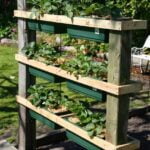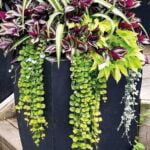When it comes to creating a beautiful and functional outdoor space, the landscape around your foundation plays a crucial role. Implementing the right landscape ideas around foundation can not only enhance the curb appeal of your property but also provide protection and support to your home. From choosing the right plants to ensuring proper water management, there are several factors to consider when landscaping around the foundation of your house.
Assessing the space is an essential first step in creating an appealing landscape around your foundation. Understanding the layout and size of the area will help you determine the best approach for planting and hardscaping. Additionally, selecting low-maintenance plants for foundation planting can ensure that your landscape remains vibrant with minimal effort.
In this article, we will explore various landscape ideas that can enhance the area around your foundation, including creating visual interest with texture and color, incorporating hardscape elements such as pathways and mulch, and addressing drainage issues. By following these tips and maintenance suggestions, you can achieve a beautiful and well-kept outdoor space that complements and protects your home’s foundation.
Assessing the Space
When it comes to landscaping around the foundation of your home, understanding the layout and size of the area is crucial. By assessing the space properly, you can create a cohesive and visually appealing landscape that complements your home’s architecture. Here are some key steps to consider when evaluating the space around your foundation:
- Measure the area: Before starting any landscaping project, it’s important to measure the area around your foundation. This will help you determine the available space for planting and hardscaping elements. Take into account any obstacles such as utility boxes, air conditioning units, or other structures that may impact your design.
- Consider sunlight and shade: Take note of how much sunlight and shade the area receives throughout the day. This will help you select the right plants that thrive in your specific lighting conditions. For example, if your foundation gets full sun, you may want to consider heat-tolerant plants such as succulents or lavender.
- Evaluate soil quality: Understanding the soil quality is essential for successful landscaping around the foundation. Conduct a soil test to determine its pH level and composition. This will guide you in selecting plants that are well-suited to your soil type and condition.
By carefully assessing the layout and size of the space around your foundation, you can make informed decisions when it comes to plant selection, hardscaping elements, and overall design. This ensures that your landscape not only looks beautiful but also enhances the overall appeal of your home’s exterior.
Choosing the Right Plants
When it comes to landscaping around the foundation of your home, choosing the right plants is crucial. Not only do you want to enhance the aesthetic appeal of your outdoor space, but you also want to ensure that the plants are low-maintenance and won’t cause any structural issues with your home’s foundation. Here are some low-maintenance plant options to consider for foundation planting:
- Shrubs: Shrubs are a great option for foundation planting because they provide structure and year-round interest. Look for low-maintenance options such as boxwoods, dwarf yews, or junipers which require minimal pruning and care.
- Perennials: Perennial flowers can add a pop of color to your landscape while requiring less maintenance than annuals. Consider planting perennials like lavender, black-eyed susans, or ornamental grasses which are drought-tolerant and easy to care for.
- Ground covers: Using ground covers around the foundation of your home can help prevent erosion and reduce maintenance needs. Opt for low-growing options such as creeping phlox, sedum, or vinca which will create a lush carpet of foliage with minimal effort.
It’s important to choose plants that not only complement the style of your home but also thrive in your specific climate and growing conditions. By selecting low-maintenance plant options for foundation planting, you can enjoy a beautiful landscape without spending hours on upkeep.
Creating Visual Interest
When it comes to landscaping around the foundation of your home, one of the key elements to consider is creating visual interest. This can be achieved by using a combination of texture and color in your plant selection and hardscape elements. By carefully choosing the right plants and incorporating visually appealing hardscape features, you can enhance the overall look of your landscape.
One effective way to create visual interest is by using a variety of plants with different textures and colors. For example, you can mix soft, feathery foliage with bold, coarse leaves to create contrast and add depth to your planting beds. Additionally, incorporating plants with flowers in various colors can add pops of color throughout the year, creating a dynamic and visually appealing landscape.
In addition to plant selection, hardscape elements such as pathways, stones, and mulch can also contribute to the visual appeal of the landscape around your foundation. Using different types of materials and textures for pathways or incorporating decorative stones strategically throughout your landscape can add dimension and interest. Mulch not only helps retain moisture for your plants but also provides a clean, finished look to your planting beds.
It’s important to keep in mind that balance is key when it comes to creating visual interest in your landscaping design. Too much variety can result in a cluttered look, while too little may appear monotonous. By carefully considering texture and color in both plant selection and hardscaping, you can achieve a visually appealing landscape that enhances the overall appearance of your home’s foundation.
| Landscaping Element | Example |
|---|---|
| Plants with Different Textures | Ferns mixed with ornamental grasses |
| Plants with Various Colors | Lavender mixed with Coreopsis for contrasting blooms |
| Hardscape Elements | Natural stone pathway leading through planting beds |
Hardscape Elements
When it comes to landscaping around the foundation of your home, incorporating hardscape elements can greatly enhance the overall appeal of your outdoor space. Pathways, stones, and mulch are all great options for adding visual interest and functionality to your landscape design.
Pathways
Creating pathways around the foundation of your home not only adds a decorative element but also serves a practical purpose. Whether you prefer a natural stone path, brick walkway, or gravel trail, a well-designed pathway can guide visitors to your front door or lead them on a leisurely stroll through your garden. Pathways can also help define the borders of your planting beds and provide easy access for maintenance.
Stones
Incorporating stones into your foundation landscaping can add texture and dimension to the area. Large boulders can serve as focal points or natural dividers between different sections of your landscape, while smaller decorative rocks or pebbles can be used as ground cover or mulch around plants. Using stones strategically can help prevent erosion, retain moisture in the soil, and create a visually appealing contrast with greenery.
Mulch
Mulch is an essential element in foundation planting, as it helps conserve moisture, suppress weeds, and improve soil quality. Organic mulches such as bark chips or shredded leaves not only provide functional benefits but also add a neat and polished look to the landscape. In addition to organic options, there are various types of decorative mulch available in different colors and textures to complement the overall aesthetic of your outdoor space.
Incorporating pathways, stones, and mulch into your foundation landscaping not only enhances the visual appeal but also adds functionality to the space. By carefully selecting these hardscape elements and integrating them with your chosen plants, you can create a cohesive and eye-catching landscape that complements your home’s foundation beautifully.
Dealing With Drainage
Assessing Drainage Needs
Before beginning any landscaping project around the foundation, it’s important to assess the drainage needs of the area. Consider how water flows around your property during heavy rain and where it tends to pool. This will help you determine if there are any existing drainage issues that need to be addressed before adding new landscaping features.
Implementing Drainage Solutions
Once you’ve identified any drainage issues, it’s time to implement solutions to ensure proper water management. This may include installing French drains, extending downspouts away from the foundation, or regrading the soil to promote better water flow. By addressing these issues upfront, you can prevent water from pooling around the foundation and potentially causing damage over time.
Choosing Water-Friendly Plants
In addition to implementing drainage solutions, choosing the right plants for foundation planting can also help manage water effectively. Opt for drought-resistant and low-maintenance plants that can thrive in your specific climate and soil conditions. These plants will require less watering overall and can help absorb excess water in the soil, reducing the risk of water seeping into your foundation.
By paying attention to proper water management and addressing drainage needs, you can protect your home’s foundation while creating a beautiful landscape around it. Combined with thoughtful plant choices and visually appealing design elements, you can achieve a functional and visually stunning outdoor space that enhances your home’s curb appeal while ensuring its long-term structural integrity.
Maintenance Tips
Maintaining the landscaping around the foundation of your home is crucial for both its aesthetic appeal and structural integrity. It requires regular attention and care to ensure that plants are healthy, hardscape elements are well-maintained, and proper drainage is in place. By following some simple maintenance tips, you can keep the landscape around your foundation looking its best all year round.
One important aspect of maintaining the landscaping around the foundation is to regularly prune and trim the plants. Overgrown shrubs and bushes can not only detract from the appearance of your home but also potentially cause damage by coming into contact with the exterior of the house. Keeping them trimmed not only promotes healthy growth but also prevents any potential issues with pests or moisture retention.
Another essential maintenance task is to regularly inspect and clean hardscape elements such as pathways, stones, and mulch. These features can become dirty or overgrown with weeds over time, diminishing the overall attractiveness of your landscape. By routinely cleaning, weeding, and possibly replenishing mulch, you can ensure that these elements continue to enhance your outdoor space.
In addition to plant care and hardscape maintenance, it’s crucial to pay attention to the drainage around your foundation. Proper water management is essential for protecting the structural integrity of your home. Be sure to check that gutters are clear of debris, downspouts are directing water away from the foundation, and any grading issues are promptly addressed to prevent water pooling near your home’s base.
| Maintenance Tip | Importance |
|---|---|
| Regular Pruning & Trimming | Promotes healthy growth and prevents potential damage |
| Cleaning Hardscape Elements | Enhances overall attractiveness of landscape |
| Proper Water Management | Protects structural integrity of home by preventing water damage |
Final Thoughts
In conclusion, landscaping around the foundation of your home is not just about creating an aesthetically pleasing outdoor space, it is also about maintaining the integrity of your property. The right landscape ideas around the foundation can enhance the overall curb appeal of your home while also providing a functional and sustainable outdoor environment.
By assessing the space, choosing the right plants, incorporating hardscape elements, and addressing drainage issues, you can create a beautiful and low-maintenance landscape that complements your home’s architecture. Selecting low-maintenance plants that are suitable for your climate will help to ensure that your foundation planting remains vibrant year-round with minimal upkeep required.
Incorporating texture and color through a thoughtful combination of foliage and flowers will create visual interest and enhance the beauty of your landscape. Additionally, using hardscape elements such as pathways, stones, and mulch can add structure and depth to the area around your foundation. With proper maintenance and attention to water management, you can enjoy a gorgeous landscape that not only enhances your home but also protects its foundation for years to come.
Frequently Asked Questions
What Is the Best Landscape Next to Foundation?
The best landscape next to a foundation is one that allows for proper drainage and prevents water from pooling against the house. This could include sloping the land away from the foundation, installing a French drain, or using porous materials like gravel or river rocks.
How Do You Landscape Against Foundation?
When landscaping against a foundation, it’s important to consider the grading of the land to ensure that water drains away from the house. This may involve adding soil to create a slope, planting native shrubs or bushes with shallow roots, and using mulch or gravel to prevent erosion and maintain proper drainage.
What Is the Best Thing to Put Around the Foundation of a House?
The best thing to put around the foundation of a house is a combination of well-draining material like gravel or river rocks and native plants with shallow root systems. These can help prevent erosion, manage water runoff, and minimize the risk of moisture-related issues near the foundation.
Additionally, incorporating a French drain system can also be beneficial in directing water away from the house.

Welcome to my gardening blog! I am passionate about plants and enjoy sharing my knowledge and experiences with others. In this blog, I will write about everything related to gardening, from tips on how to get started to updates on my own garden projects.





